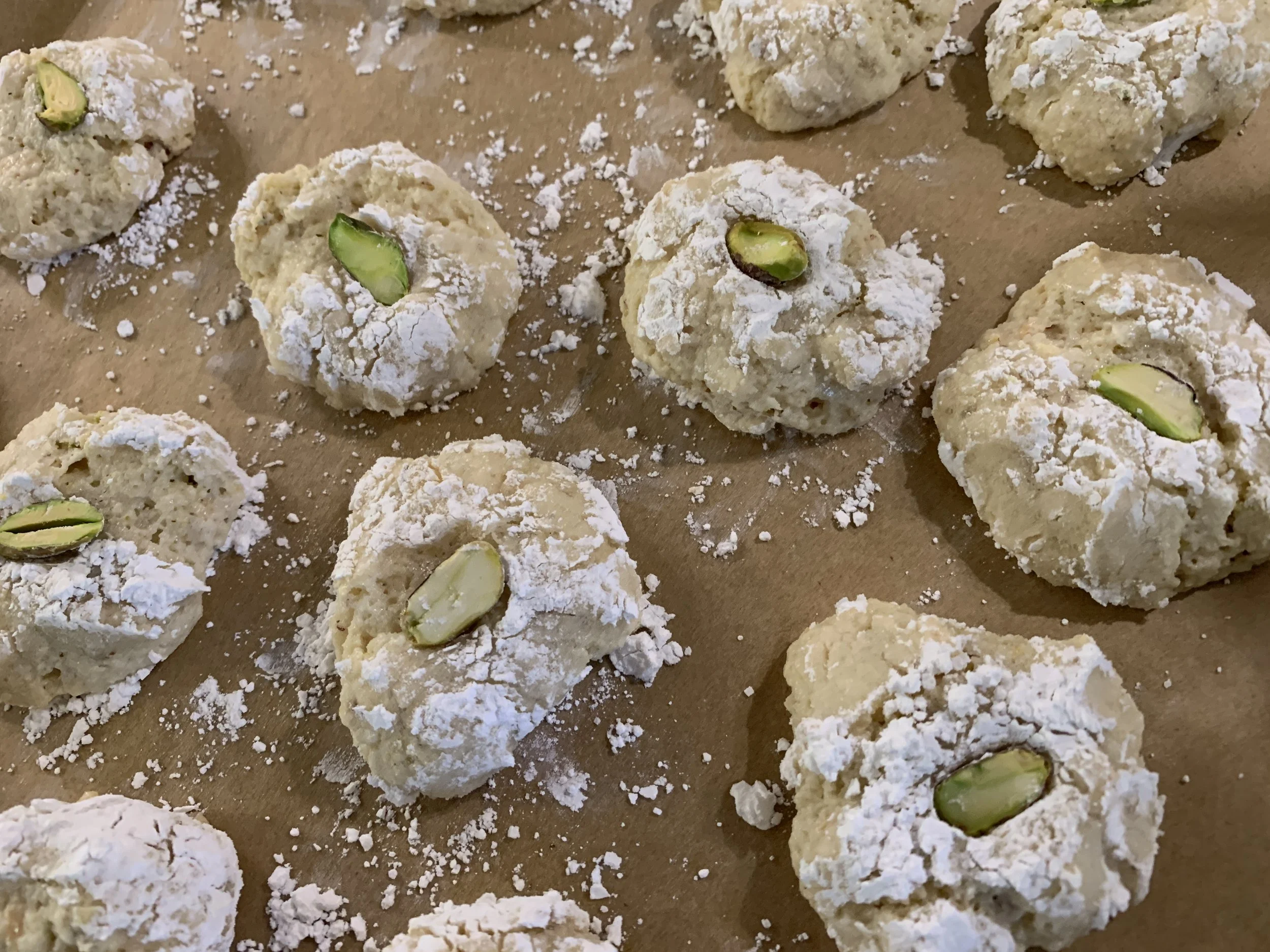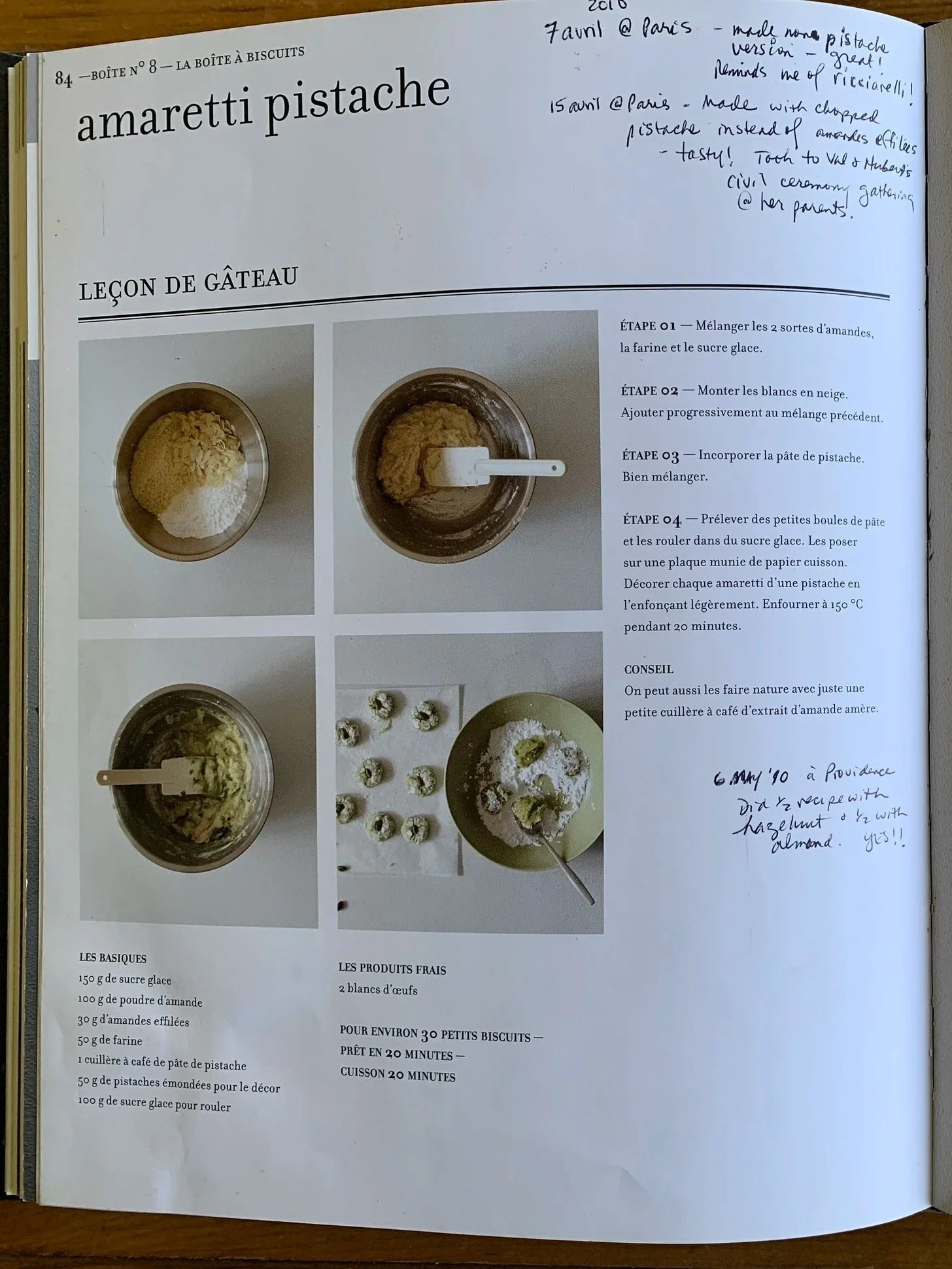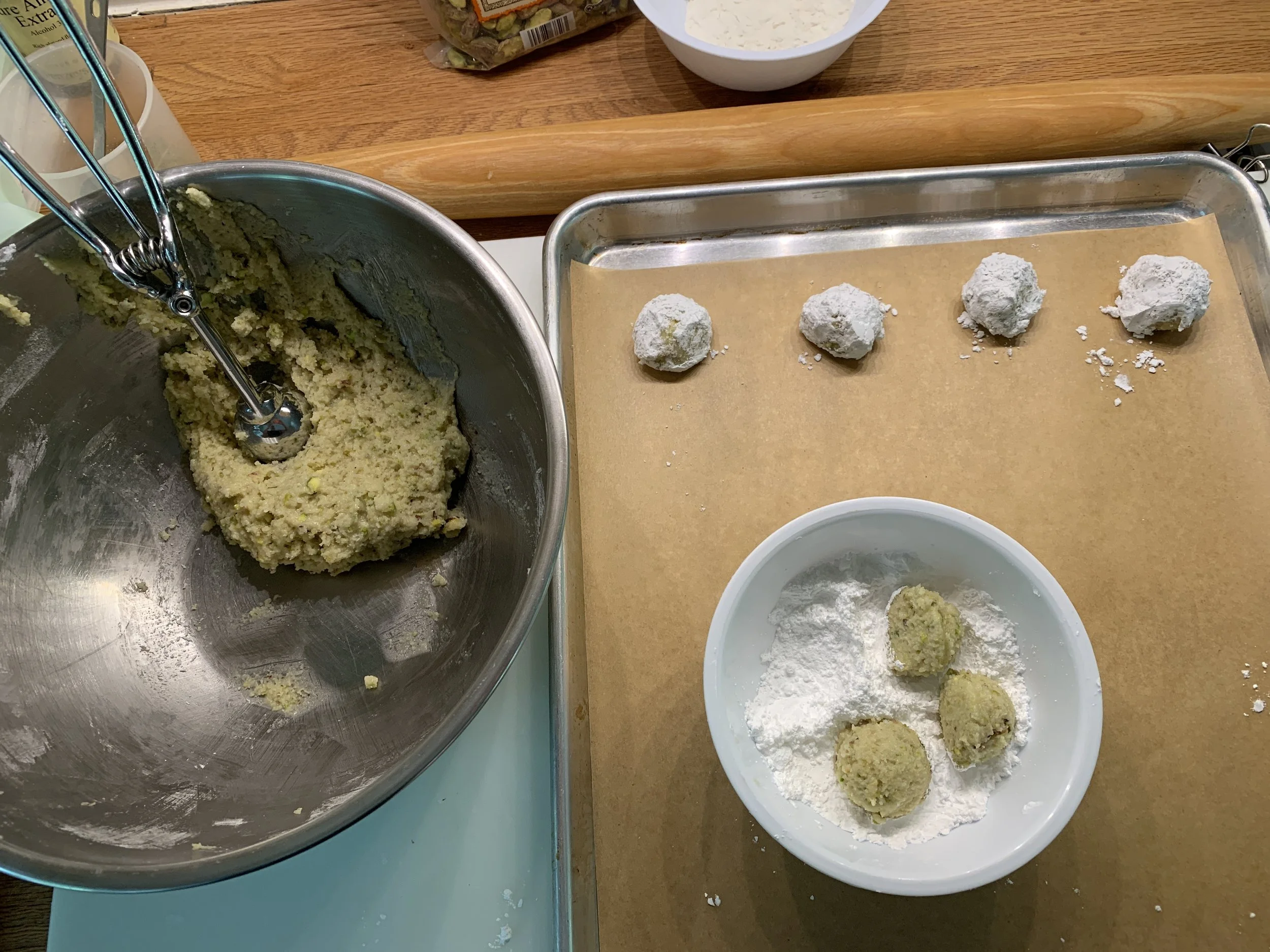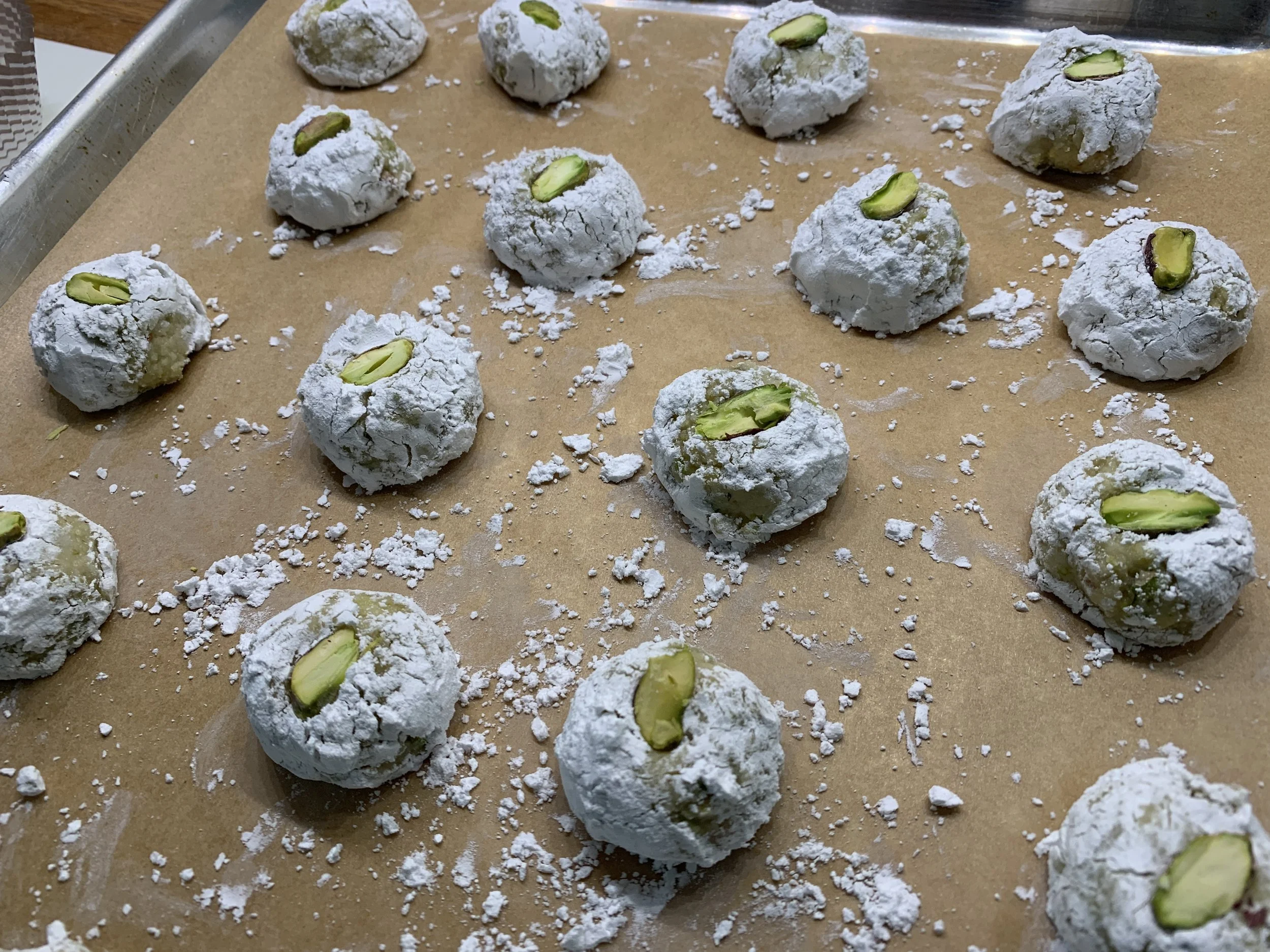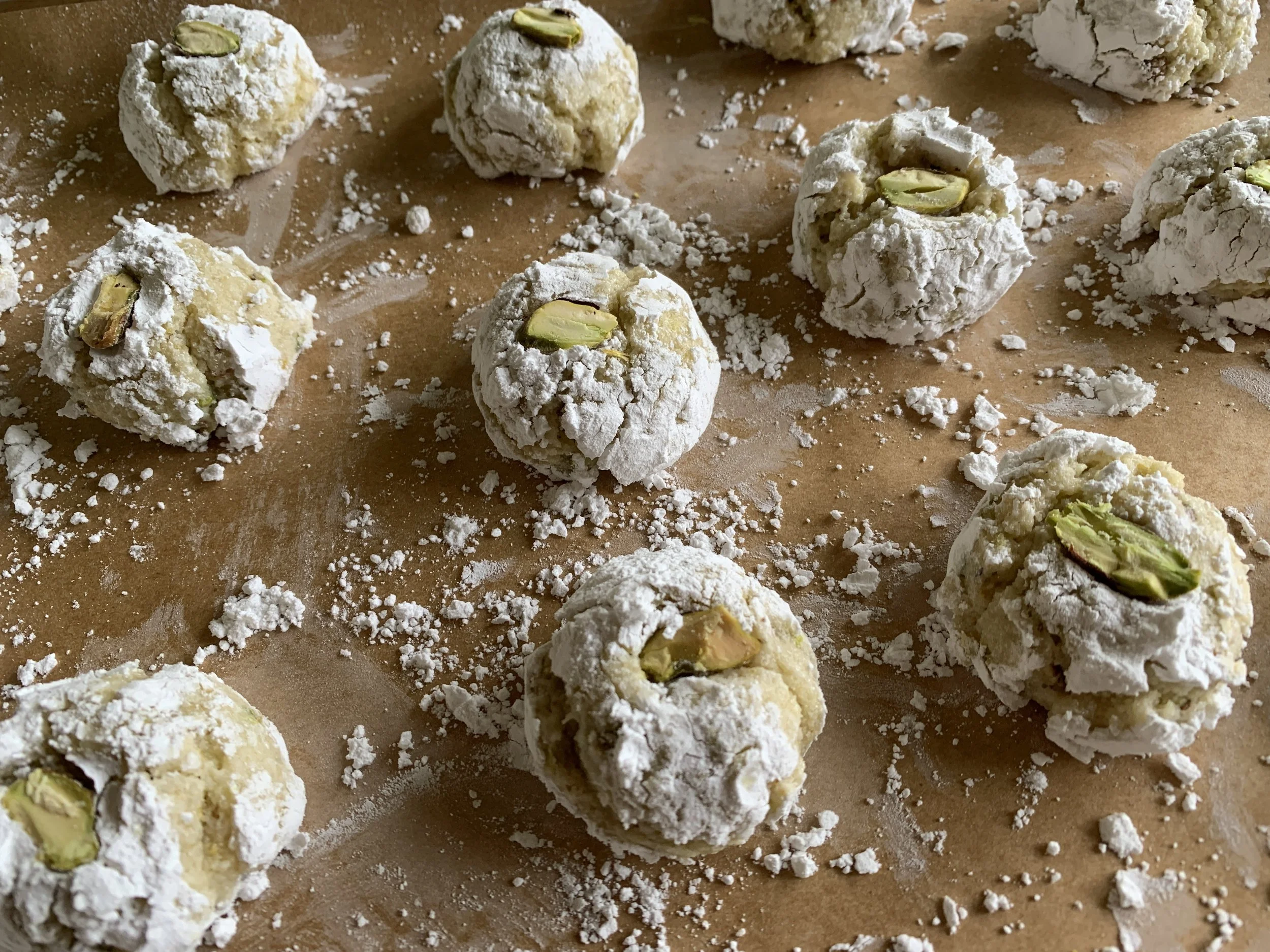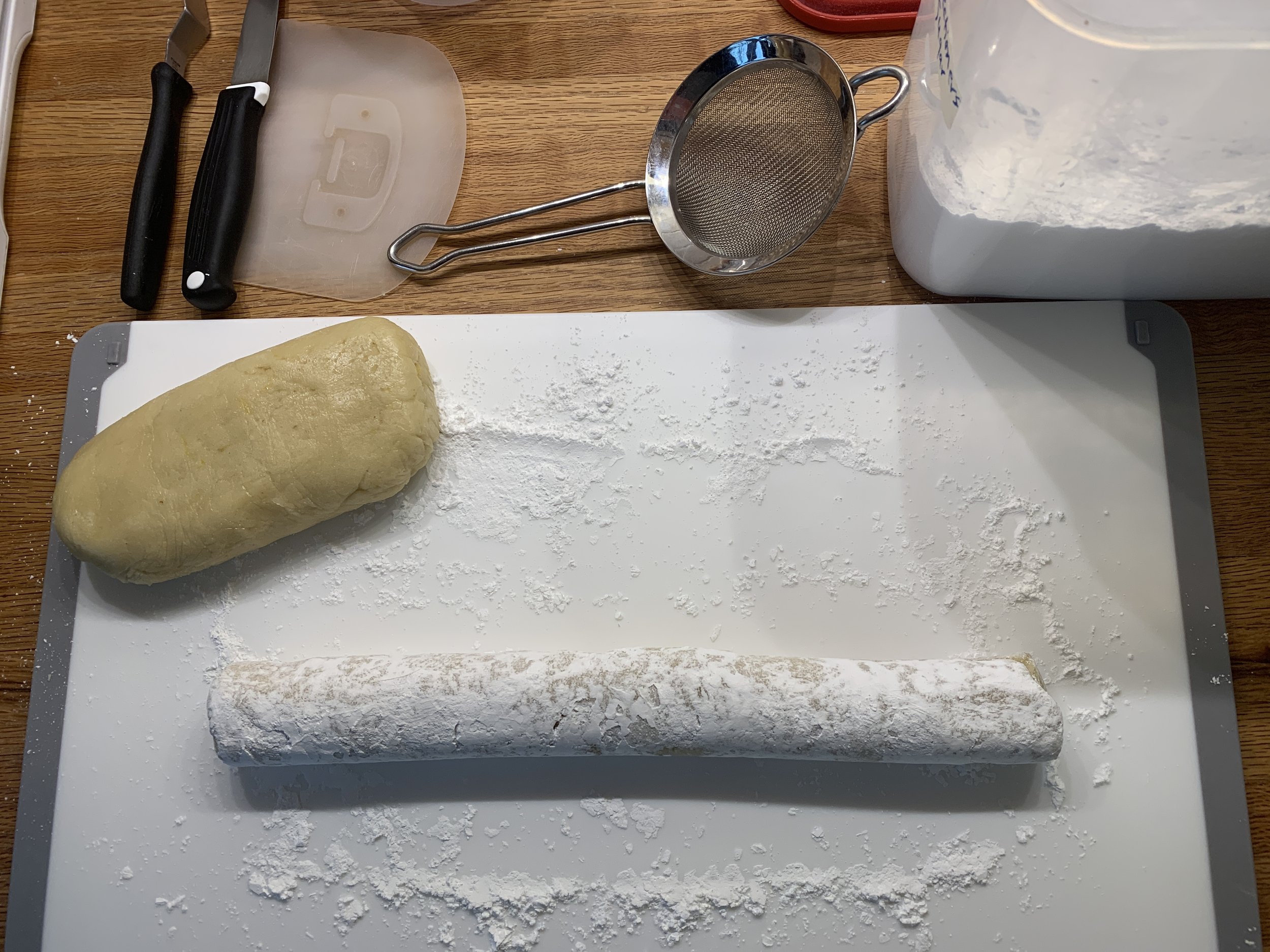Pistachio amaretti
/Hi all. I’m publishing this post from Paris!!!
After my recent semifreddo post I still have a few things up my sleeve whilst on a bit of an Italian tangent. One of them is amaretti, a delectable meringue based cookie that’s not only easy to make but delicious to boot. Interestingly, when I put amaretti into Google translate from Italian to English it gives me “macaroon” (like our coconut macaroon). There’s also amaretti morbidi which translates to “soft macaroon”. If I translate macaron from Italian to French, Italian to English, French to Italian, English to either French or Italian it all comes out as macaron. Curious, eh?
Let’s just say that the word “macaroon” for me will forever mean the coconut one that many Americans know and love. Otherwise “macaron” goes for anything almond-meringue-y-like, whether it be French, Italian or some other nationality.
Amaretti’s ingredients are indeed very similar to those of French macarons, the ever popular colorful sandwich treats, save for the fact they contain a bit of wheat flour in addition to almond flour, confectioner’s sugar, egg whites and nuts. The process is less fussy than the classic macaron and the batter comes together quickly. No resting times or waiting or special mixing methods. I like that.
Here’s a bit of back story.
One of my favorite books
I purchased this book back in March, 2010 while I was in Paris for a month or so. I was taking French language classes at L’Alliance Français, attended a croissant class at Le Notre, went to Mulhouse to visit my friend Misato, attended the civil ceremony for friend Val’s marriage - all good stuff. That was the year of the volcanic eruption in Iceland - my return home was delayed a few days so I was able to tack on a day trip to Giverny (lovely!) and a small group tour of a well known Paris pastry shop showing us the ins and outs of macaron making. Sometimes it pays to have travel plans change!
What attracted me to the book was not only the inclusion of assortments of petite treats (love ‘em all!) like choux, tartelettes, sablés, meringues and small cakes such as moelleux and financiers but also instructions/patterns for making your own boxes (I loved shopping at BHV in their craft/paper department).
A lovely assortment of biscuits from the book’s pages
My notes on a number of the recipes I tested indicate that I had made these pistachio amaretti (as well as the box to contain them) to take along to a celebration at Val’s parents’ home after the civil ceremony. Even though the book is in French, the amaretti are truly Italian in nature.
The page in question
Here’s the process: in a medium bowl blend 150 g / 1.5 cups confectioner’s sugar, 100 g / 1 cup almond flour, 30 g / 1 ounce either lightly toasted/cooled, chopped pistachios or crushed sliced almonds and 50 g / slightly mounded 1/3 cup all purpose flour.
In a separate bowl whisk two large egg whites to soft peaks then fold gently into the above ingredients in 2-3 additions. While the recipe calls for blending in a tablespoon of pistachio paste, I added just a bit of extra ground pistachios instead - it worked just fine. As you see below, the batter is rather rough and tumble.
Scoop small boules onto a parchment lined sheet pan - I use a tablespoon sized scoop - and roll in additional confectioner’s sugar. Yield should be around 25-30 small cookies.
Press a pistachio half in the center of each cookie.
Bake at 300º F for about 20 minutes, rotating the tray half way through.
Let cool and enjoy! They have a delightfully crisp exterior and chewy interior. They’ll be fine in a container in the fridge for a number of days, although I tend to freeze them and pop out a few to enjoy when the mood strikes. They’ll remain very happy in there for several weeks.
I’ll be back again in a while - enjoy autumn!
florist shop sidewalk display in Paris

